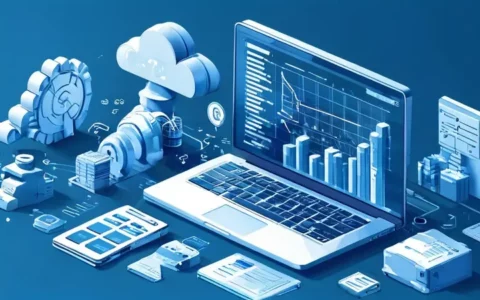
Block-based programming, also known as code blocks, is a programming language or educational software in which users manipulate graphical blocks to write codes. Among its numerous benefits, block-based programming significantly simplifies the coding process, especially for beginners and children, as it eliminates the need for memorizing complex syntax rules and typing out codes. Instead, it utilizes an intuitive drag-and-drop interface.
One of the distinguishing aspects of block-based programming is its focus on visual elements. Users can see the logic flow more clearly and understand how different components fit together to create programs. This can also make debugging more straightforward since the graphical representation allows users to identify logical errors more easily than in text-based coding. It's an excellent educational tool that provides a gentle introduction to computational thinking and the basic principles of programming.
I. INTRODUCTION TO BLOCK-BASED PROGRAMMING
Block-based programming languages are an innovative approach to introducing programming concepts to beginners. Block-based systems such as Scratch by MIT have gained immense popularity for their accessibility and engaging learning environment. These systems enable users to construct programs by snapping together visual blocks that represent traditional coding constructs like loops, if-then statements, and variables.
II. THE ADVANTAGES OF CODE BLOCKS
Block-based programming provides a myriad of benefits. For one, it's incredibly user-friendly, attracting a diverse range of learners and encouraging participation in coding activities. The structure promotes creative expression and problem-solving skills while minimizing the challenges associated with syntax errors and typos.
III. BLOCK-BASED PROGRAMMING IN EDUCATION
Educational institutions have been quick to adopt block-based programming languages to teach coding principles to students. The interactive nature of block coding helps foster collaboration and discussion, as students work on shared projects and easily exchange ideas due to the visual nature of these programming blocks.
IV. TRANSITIONING FROM BLOCKS TO TEXT-BASED CODE
While block-based programming is an excellent starting point, it also serves as a stepping stone towards more advanced, text-based programming languages. Users who start with blocks often find it easier to learn languages like JavaScript or Python later on, as they have already grasped core programming concepts through a visual medium.
V. CHALLENGES AND LIMITATIONS
Despite its advantages, block-based programming does come with its set of challenges. Limitations in flexibility compared to traditional programming can be a downside for more advanced or specific tasks. Also, as developers progress, they need to transition to text-based programming to unlock more capabilities and enter professional coding environments.
VI. THE FUTURE OF BLOCK-BASED PROGRAMMING
The ongoing development of block-based programming tools suggests a promising future. Innovations aim to enhance the power and usability of these tools, allowing for more complex projects and a smoother transition to text-based coding. Block-based programming continues to play a pivotal role in introducing the next generation to the world of programming.
In summary, the field of block-based programming, also known as code blocks, has brought about a revolution in the way we learn and teach coding. Its user-friendly nature and ability to abstract complex coding principles into tangible visual elements make it a cornerstone in modern programming education. As both an end in itself and a means to more complex coding education, block-based programming undoubtedly will continue to shape how new coders emerge and evolve in their coding journey.
相关问答FAQs:
1、What is the English term for building block programming?
The English term for "积木块编程" is "block-based programming". It is a programming approach where users can drag and drop visual blocks or chunks of code to create programs. This method is especially popular among beginners and children as it provides a more intuitive and visual way to learn and understand coding concepts.
2、How does block-based programming work?
Block-based programming works by using a visual interface where users can select and arrange blocks of code to create a program. These blocks are usually color-coded and represent specific programming concepts or actions. Users can drag and drop these blocks, connecting them together to create a sequence of instructions. This eliminates the need for traditional coding syntax, making it easier for beginners to grasp programming concepts and build functional programs.
3、What are the advantages of block-based programming?
Block-based programming offers several advantages over traditional text-based coding:
- Easy to learn: This approach allows beginners to quickly understand coding concepts and logic without worrying about complex syntax.
- Visual representation: The use of color-coded blocks helps users visualize the structure of their code and understand how different elements work together.
- Error prevention: Block-based programming reduces the likelihood of syntactical errors, as the blocks can only be connected in valid combinations.
- Rapid prototyping: With block-based programming, users can quickly build and iterate on their ideas, making it ideal for rapid prototyping and experimentation.
- Accessibility: The visual nature of block-based programming makes it more accessible to a wider range of learners, including children and individuals with disabilities.
Overall, block-based programming provides an engaging and user-friendly way for individuals, regardless of their age or coding experience, to start their journey into the world of programming.
文章标题:积木块编程英文叫什么,发布者:飞飞,转载请注明出处:https://worktile.com/kb/p/1590857

 微信扫一扫
微信扫一扫  支付宝扫一扫
支付宝扫一扫 




